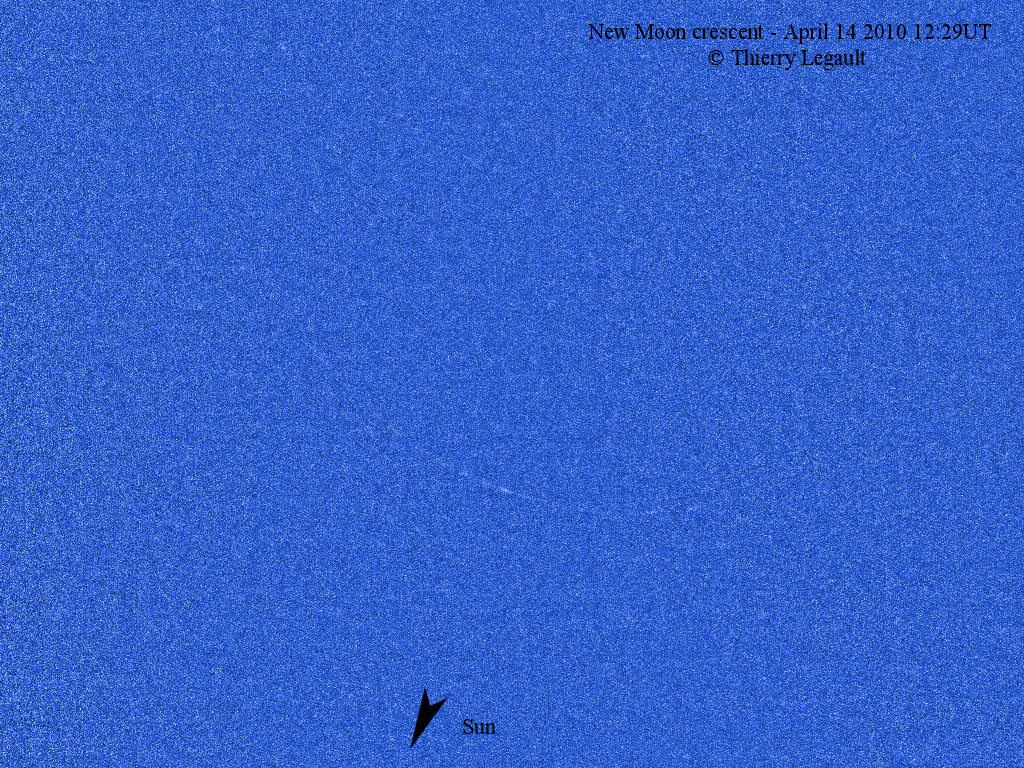July 28, 2019
Almost Nothing
Originally published April 16, 2010

image by Thierry Legault,Montfaucon, France
At the instant of New Moon, when the Sun and Moon have their smallest angular separation for the month, there will always be a very thin sliver visible from Earth, except when solar eclipses occur. But because the sliver is very thin, and is seen during the day, very near the Sun, the exact moment of New Moon has never been photographed before. Thierry Legault has now done it. His website shows the special setup he used to block light from the Sun, which was only 4.6° distant. He also used an optically excellent telescope to reduce scattered light and a near infrared filter to increase contrast. Like the first imaging of an analemma, this seemingly impossible imaging challenge may be repeated since it is now known to be doable.
Chuck Wood
I thank Jocelyn Sérot for recommending this image.
History note: Apollo 16 was launched to the Moon on this date in 1972.
Technical Details
April 14, 2010, 12:29 UT. Takahashi FSQ-106ED with focal reducer (D=106mm, F=400mm) on Losmandy Titan German equatorial mount, Lumenera Skynyx L2-2 monochrome video camera (1616x1212 pixels of 4.4 microns), low-pass infrared filter 850nm in luminance. Processing: combination of 500 calibrated (flat-field) images, gradient removal, contrast/brightness, IR-RGB color.
Related Links
Thierry's webpage
Yesterday's LPOD: Puzzle Globe
Tomorrow's LPOD: Interesting Big Stuff
COMMENTS?
Register, Log in, and join in the comments.



